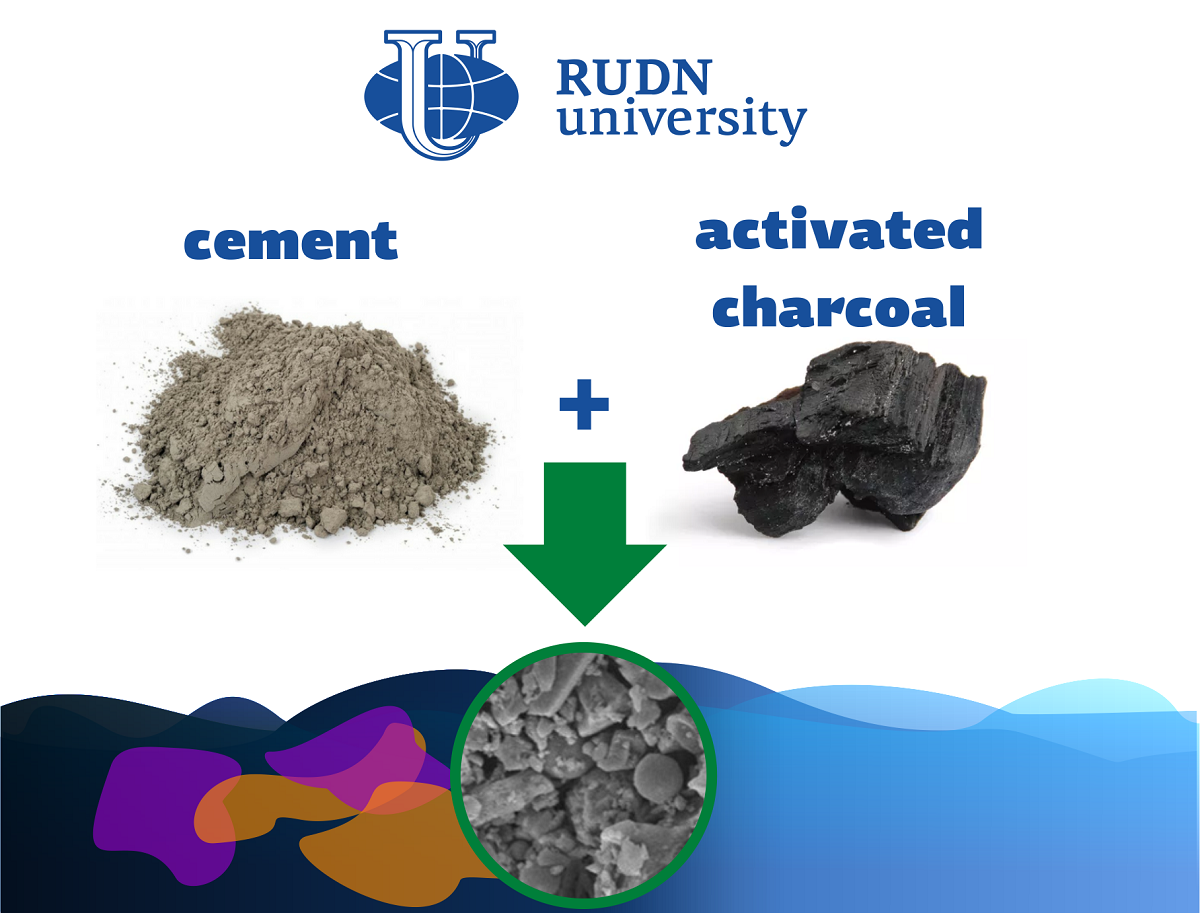RUDN engineers created a filter for water from coal and cement, and its effectiveness was proven using an application

Cement and concrete are used not only in construction. In combination with other chemical compounds, they can become, for example, a filter for purifying water from toxic substances. Coal and other carbonaceous materials are also known for their ability to absorb pollutants. Their combination with cement has been thoroughly studied for their mechanical properties, but there is no data on how the combination of cement and coal can help water purification.
“There are no reports on the use of cement-coal composites as adsorbents for water treatment. Therefore, we set a goal to uncover the potential of these materials as adsorbent coatings to remove contaminants from water. Cement can be used as a supporting medium, a framework, and activated carbon acts as a filler,” — said Professor Dmitry Koroteev, PhD, the Engineering Academy RUDN.
RUDN researchers created a filter from cement and coal in different proportions — coal was 0%, 10%, 30% and 50% of the cement weight. The effect of the filter was tested in an experiment, the dyes methylene blue and rhodamine B were added to water and the cement-coal complex was placed there. To evaluate the effectiveness of the complex, researchers have applied an innovative technique, the scientists judged the amount of dye absorbed in the filter, by changing the color of the water solution. Withal this colorimetric analysis was performed using ordinary smartphones.
A special smartphone app developed by the authors in previous studies showed how the color of the solution changed. The best result for methylene blue showed a complex with 50% charcoal. In an hour and a half, the solution turned from saturated blue to almost transparent, the cement-carbon composite absorbed up to 80% of the dye. The results for rhodamine B were less pronounced, in an hour and a half, the complex absorbed about 70% of the dye. The scientists used the filter several times to evaluate how its efficiency changed. The amount of dye removed slowly decreased with each use and reached 50%-57% by the eighth use cycle.
“Smartphones have become an integral part of our lives. Now the use of smartphones is not limited to entertainment, and they can be used for convenient scientific installations. Individual studies have suggested that colorimetric analysis can be used to determine the concentration of a stained compound in an aqueous solution. We have shown that all quantitative colorimetric analysis can be done using a smartphone-based system,” Huang Juezhu, a student at the Engineering Academy.
Results were published in Construction and Building Materials.
The RUDN University Science and Innovation Prize winners were honoured at the extended meeting of the Academic Council. In 2024 the terms of the traditional RUDN University Prize were changed: for the first time the competition was announced in two categories: leading scientists and young scientists.
According to the International Energy Agency (IEA), electricity consumption in Africa has increased by more than 100% over the past two years (2020-2022). However, 74.9% of this energy is still produced by burning organic fuels — natural gas, coal and oil. At the same time, the level of electrification on the continent remains extremely low — only 24%, while in other developing countries it reaches 40%. Even in grid-connected areas, electricity supply is often unreliable: industrial enterprises lose energy on an average of 56 days a year.
Today, diagnosis and treatment planning with orthodontists takes several days. Also, complications can arise during treatment that slow down the patient's recovery process. For example, improper orthodontic treatment planning can lead to temporomandibular joint dysfunction.
The RUDN University Science and Innovation Prize winners were honoured at the extended meeting of the Academic Council. In 2024 the terms of the traditional RUDN University Prize were changed: for the first time the competition was announced in two categories: leading scientists and young scientists.
According to the International Energy Agency (IEA), electricity consumption in Africa has increased by more than 100% over the past two years (2020-2022). However, 74.9% of this energy is still produced by burning organic fuels — natural gas, coal and oil. At the same time, the level of electrification on the continent remains extremely low — only 24%, while in other developing countries it reaches 40%. Even in grid-connected areas, electricity supply is often unreliable: industrial enterprises lose energy on an average of 56 days a year.
Today, diagnosis and treatment planning with orthodontists takes several days. Also, complications can arise during treatment that slow down the patient's recovery process. For example, improper orthodontic treatment planning can lead to temporomandibular joint dysfunction.